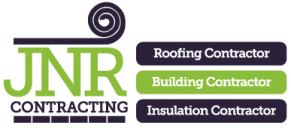Drywall, also known as plasterboard, has become the go-to material for constructing interior walls and ceilings in modern homes. While often referred to as “plaster” in casual conversation, drywall itself doesn’t require a full plaster application. However, achieving a smooth, finished look typically involves a process called “plastering” the joints and screw holes with a joint compound (often referred to as mud). So, the question arises – is this extra step always necessary?
Unveiling the Drywall: Understanding the Need for Finishing
Drywall panels are composed of a compressed gypsum core sandwiched between paper facings. This lightweight and versatile material offers several advantages over traditional plaster, including:
- Faster Installation: Drywall panels can be quickly screwed or nailed to wall studs, significantly reducing construction time compared to the multi-layered application of traditional plaster.
- Cost-Effective: Drywall is a more affordable option than plaster, making it a budget-friendly choice for most projects.
- Fire Resistance: Drywall panels offer a degree of fire resistance, especially when paired with specific fire-resistant drywall types.
However, unlike traditional plaster, drywall panels have visible seams where they meet and indentations from screw heads. To create a smooth, finished surface suitable for painting or wallpapering, a joint compound needs to be applied to these areas. This process involves:
- Taping the Joints: Specialised joint tape is used to reinforce the seams between drywall panels, creating a flat and stable surface.
- Applying Joint Compound: A setting compound, often called mud, is applied in multiple coats to fill the taped joints and screw holes.
- Sanding: Each layer of mud needs to be sanded smooth before applying the next, ensuring a seamless finish.
This multi-step process, while crucial for achieving a polished look, can be time-consuming and require some practice to master.
The Case for Skipping the Plaster: Exploring Alternatives
There are situations where a fully plastered finish might not be necessary. Let’s explore some alternatives:
- Exposed Brick or Stone Walls: For a rustic or industrial aesthetic, some homeowners choose to leave interior brick or stone walls exposed. While sealing the material may be necessary, additional plastering wouldn’t be required.
- Wood Paneling: Wood paneling offers a classic and warm look. Available in a variety of styles and finishes, wood panels don’t require plastering as they create a finished surface themselves.
- Tongue and Groove Boards: Similar to wood paneling, tongue and groove boards provide a finished surface with a distinctive texture. These are commonly used in hallways, basements, or accent walls.
Considering the Finish:
Even if you decide not to go the full plastering route, you’ll still need to consider the final finish for your drywall. Here are some options:
- Skim Coat: A thin layer of joint compound can be applied over the entire drywall surface to achieve a smoother finish than just filling the joints. While not as smooth as a full plaster application, it offers a good balance between effort and result, especially for flat paint finishes.
- Textured Paint: Instead of a smooth finish, textured paint can be used to hide minor imperfections in the drywall surface. This can be a good option for those who prefer a more rustic or casual look.
- Wallpaper: Wallpaper can effectively cover drywall imperfections and create a decorative element in your space. Opt for a heavy-duty wallpaper if you’re concerned about imperfections showing through.
Pre-finished or Pre-Plastered Alternatives: Do They Exist?
While traditional plastering isn’t common in modern construction, there are a few alternatives that come pre-finished or minimise the need for extensive plastering:
- Laminated Drywall: This type of drywall features a pre-finished paper or vinyl facing on one side, eliminating the need for painting or wallpapering. However, the jointing process remains the same.
- Fiber Cement Boards: These rigid boards offer a smooth, finished surface suitable for painting. While not as common as drywall, they provide excellent moisture resistance and fire resistance. However, cutting and installing them can be more challenging than drywall.
Wet Plaster Systems: While not as readily available as drywall, some companies offer pre-fabricated wet plasterboard systems. These involve lightweight plasterboard panels with a pre-applied gypsum plaster layer. While offering a more traditional plaster aesthetic, installation can be more complex and expensive than drywall.
These pre-finished or pre-plastered options offer a good balance between aesthetics and ease of installation. However, they may come at a higher cost than standard drywall and might require more specialised skills or tools for installation.
